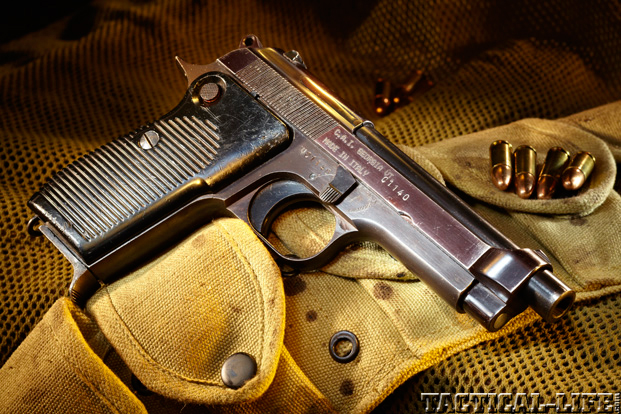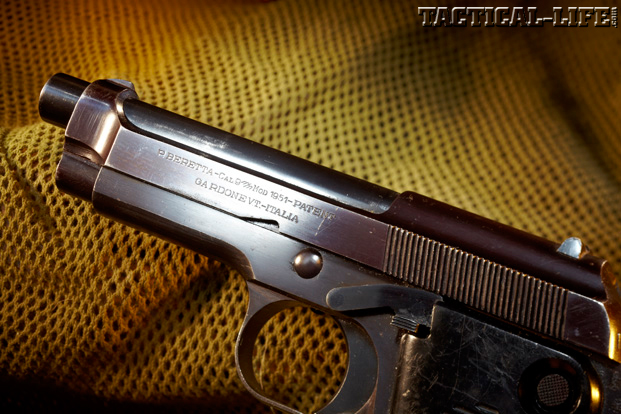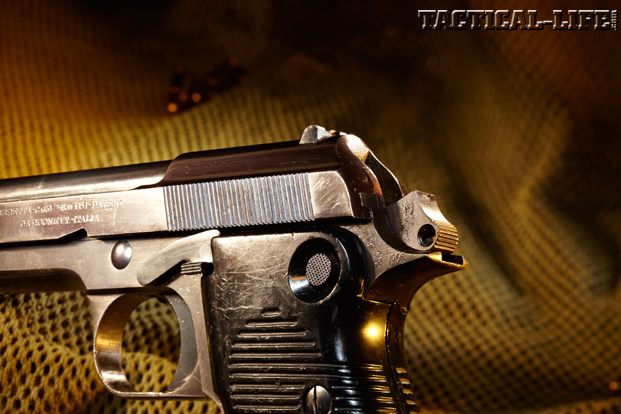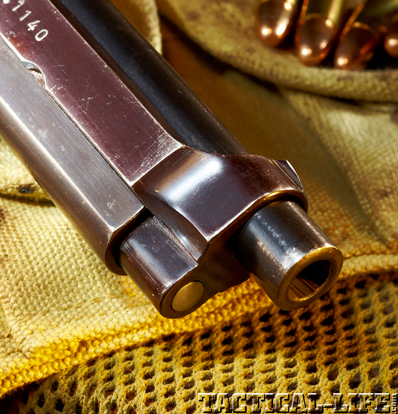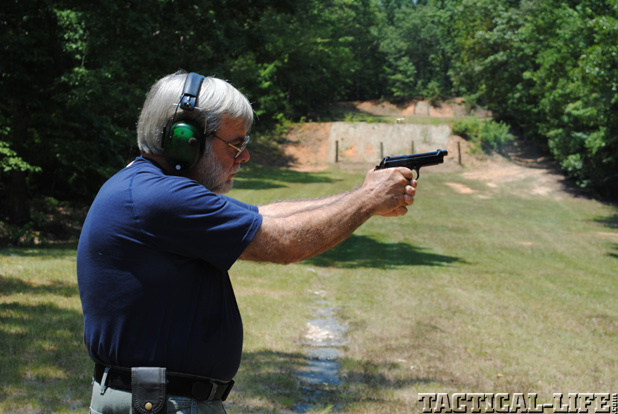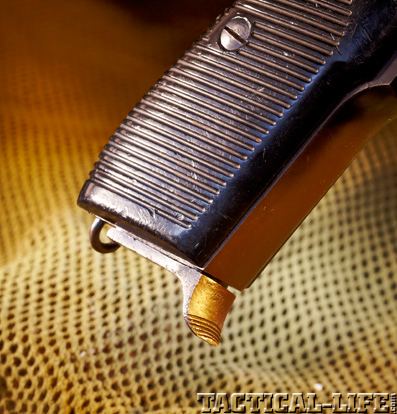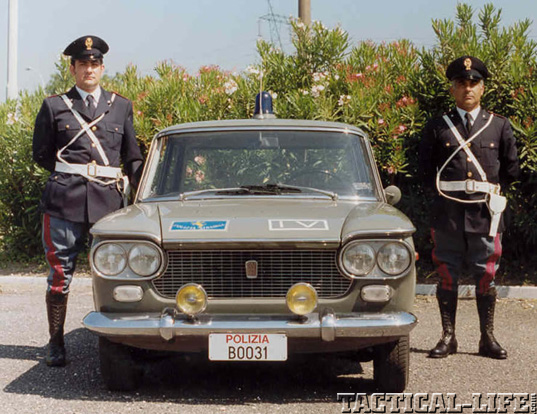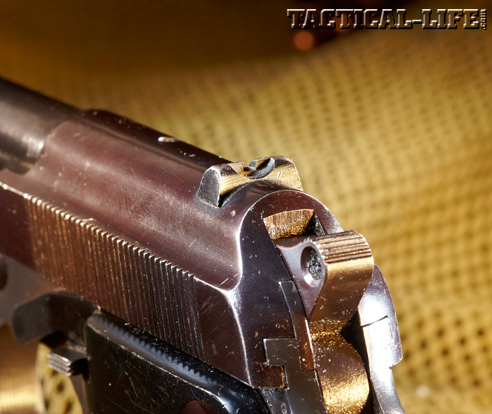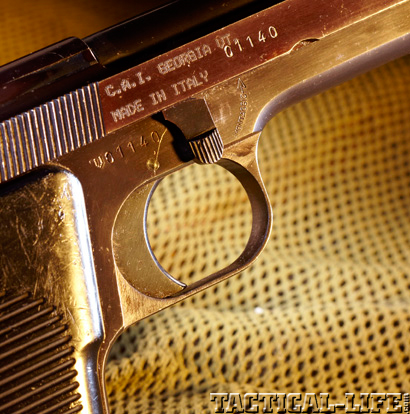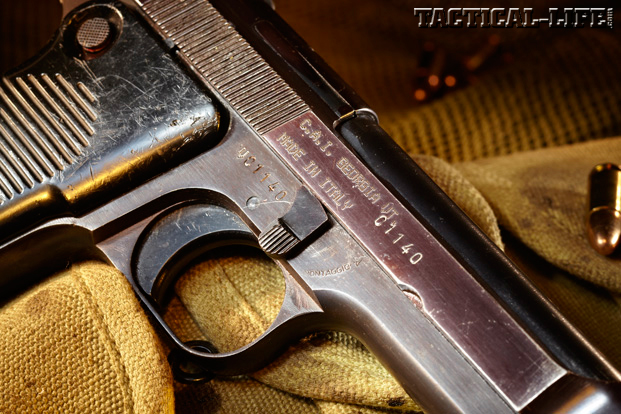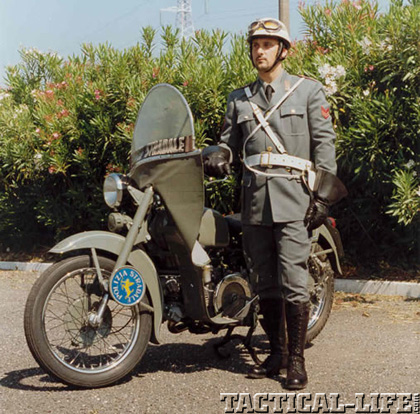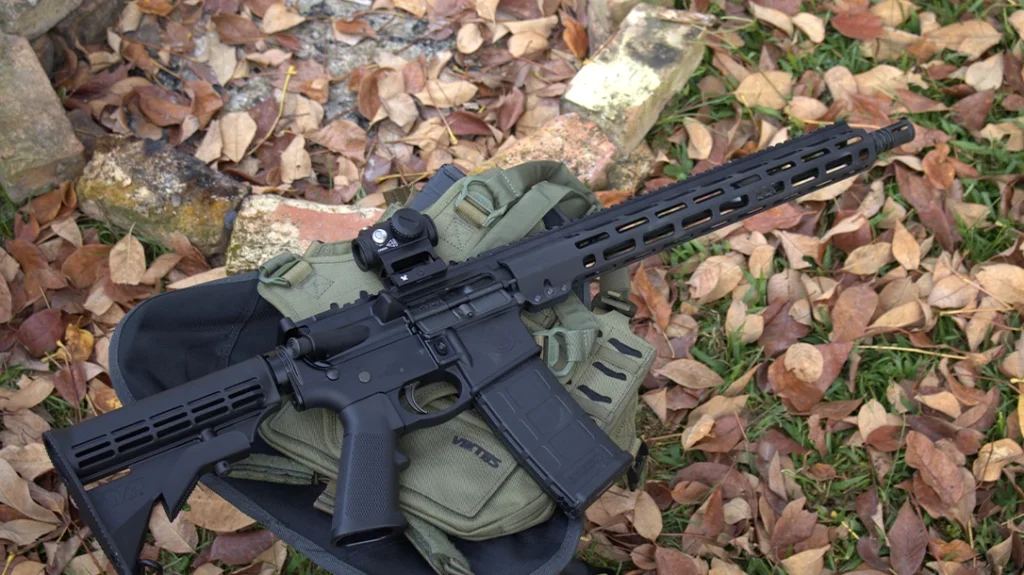It’s a well-known fact that certain countries produce military small arms with distinctive features, ones that immediately identify their nation of origin. The same can be said for certain private gun makers. A perfect example of this are the semi-auto pistols produced by the Italian firm Fabbrica D’Armi Pietro Beretta SpA, better known as Beretta.
300 Years of Beretta
Beretta was established in Gardone, in the Brescia region of northern Italy, in 1680. By the late 19th century it had become Italy’s premier manufacturer of sporting rifles and shotguns. When Italy entered World War I, they found themselves desperately short of every kind of small arm and asked Beretta to provide handguns to supplement the standard Pistola Automatica Glisenti Modello 1910. Beretta answered this request with a simple blowback-operated, semi-auto chambered for the 7.65mm Browning cartridge (.32 ACP) adopted by the Italian army as the Pistola Automatica Beretta Modello 1915.
While based upon earlier Browning/FN designs as modified by the Basque firm Gabilondo y Urresti, Beretta’s pistol included several unique mechanical and styling features, one of which would become a Beretta trademark: the open top slide. This exposed some of the barrel, did away with the necessity of an ejection port and ensured trouble-free ejection of fired cases. The Mo. 1915 and a 9mm Glisenti version—the Modello 1915/19—were both striker-fired with a simple safety lever located above the trigger, which locked the trigger and serves to help disassemble the pistol.
Advertisement — Continue Reading Below
Beretta’s then head designer, Tullio Marengoni, was involved in the design of these early pistols and, later, the firm’s excellent submachine guns. Over a 35-year period, Marengoni designed a series of pistols that, while continually improved, adhered to Beretta styling. These included the Modello 1923, the first to sport the ring shaped external hammer, another Beretta styling trademark; while the Modello 1931 saw the introduction of a curved finger-rest extension of the magazine baseplate, which also became a Beretta symbol. One of Marengoni’s best-known products, the Modello 1934 pistol chambered for the 9mm Corto (.380 ACP), was adopted by the Italian army in 1934 and would remain in army and police service for almost four decades.
Post-WWII
In 1950, Beretta assigned Signore Marengoni the task of designing a pistol chambered for the 9mm Parabellum cartridge. Marengoni developed a pistol that retained all of the traditional Beretta characteristics: a single-action trigger, an external ring hammer, an open top slide and a finger-rest extension on the magazine baseplate. Internally, it was another story: the high-pressure 9mm Parabellum required a locked breech. To achieve this, Marengoni utilized a system pioneered on the Walther P.38, in which the barrel and slide were locked together by the wedge that was cammed up by ramps on the frame rails, so that dual lugs on the wedge’s rear engaged recesses on either side of the slide. Upon firing a cartridge, the barrel and slide would recoil together a short distance, whereupon a floating plunger on the rear barrel lug impacted on the frame and released the locking wedge, allowing it to drop down and disengage the lugs from the slide, which then continued to the rear to extract and eject the spent case. A recoil spring, on a full-length guide rod under the barrel, then pulled the slide forward, stripping the next round from the magazine and chambering it. As the barrel and slide moved forward, the wedge was cammed up so the lugs once again engaged the slide, locking the two together.
Another improvement was the addition of a slide stop, which, under pressure from the magazine follower, moved up to lock the slide open when the magazine was empty. The slide could be released to chamber a new round by depressing the slide-stop lever located on the left side of the frame. The open top slide had the front sight mounted on the slide “bridge” near the muzzle and the single-column, 8-round magazine’s finger-rest extension provided a full purchase, even for the beefiest-handed shooters. Another ergonomic plus was the long grip tang that prevented bite from the small rounded hammer. The new pistol was originally intended to be manufactured of both lightweight alloy and steel frames, but the alloy prototypes proved neither accurate, durable nor pleasant to shoot, so only pistols with forged steel frames were produced.
Advertisement — Continue Reading Below
Despite the designation Pistola Automatica Beretta Modello 1951, the new pistol was not placed on the market until 1957. It was adopted by the Italian armed forces to replace the aging Mo. 1934 pistols that were still in use and a commercial version, the Brigadier, produced for sale on the civilian market. As did many European pistol manufacturers, Beretta also offered the Brigadier chambered for the 7.65mm Parabellum (.30 Luger) for sale in countries (one being Italy) that prohibited civilian ownership of pistols chambered for current military cartridges.
I must mention the M1951’s two very obvious faults: the magazine-release button is located at the bottom corner of the left grip panel, making it almost impossible to depress with the shooting hand (although magazines do fall free of the pistol when it is pressed); similarly, the manual safety is in the form of a button located at the top rear of the grip, which is pushed from right to left to make the pistol “safe” and happens to be difficult to operate with the shooting hand.
Stripping Down
To disassemble, first remove the magazine and retract the slide to make sure the chamber is empty. While holding the slide to the rear, align the rounded notch on the right side of the slide with the takedown lever. Rotate the lever forward and up, which releases the slide and allows it to be removed towards the front of the frame. Lift the rear of the recoil-spring guide rod from its step on the locking block and remove the rod and spring to the rear. Push in the plunger at the rear of the barrel assembly to remove the locking block from its recesses in the slide. Move the barrel forward slightly to clear the extractor and then remove the barrel from the slide.
Advertisement — Continue Reading Below
North Africa & the Middle East
The M1951 (it was also known as the Mo. 951) proved to be a rugged, powerful pistol and became standard issue with the Italian armed forces, Carabinieri, Guardia di Finanza and the Pubblica Sicurezza. Foreign sales were quick in coming, with both Israel and Egypt adopting the M1951 in the early 1960s. While Beretta supplied all of Israel’s pistols, the Egyptian government obtained a license from Beretta to produce it as the “Helwan” at the Maadi Military & Civil Company. Reportedly, some late-production Egyptian pistols were fitted with larger sights and utilized a heel-type magazine release. Iraq also obtained a license to manufacture the M1951 at the Al-Qādisiyyah Establishments. Known as the “Tariq,” it was the standard pistol of the Saddam Hussein–era army and police. Additional sales were made to Pakistan, Libya, Haiti, Nigeria, Tunisia and Yemen. Late production pistols had the push-button safety replaced with a more conveniently located 1911-type thumb lever.
Aside from the Helwan, the only other variation of the M1951 was a selective-fire machine pistol built by Beretta for the Italian Carabinieri and the Pakistani National Police. Known as the Modello 951R (“R” for raffica, or “burst” in Italian), it had a heavier slide, a slightly longer barrel, a fold-down pistol grip in front of the triggerguard and a selector lever on the right side of the frame, above the trigger. Extended 10- and 15-round magazines were used, and it had a cyclic rate of fire of approximately 1,000 rounds per minute, which made it very difficult to handle in full-auto. The M1951 was replaced in Italian service by the Beretta Mo. 92, although some are reportedly still in service with reserve forces.
Test Fire
Century International Arms has recently imported a supply of M1951 pistols and was kind enough to provide me with one for testing. This particular pistol had seen quite a bit of use, and while it displayed surface wear and had a worn but clean bore, it was tight and in mechanically excellent condition. I was immediately taken with the ergonomics. The pistol fit my hand perfectly, and when I brought it to eye level the sights seemed to align themselves on whatever I was looking at. In fact it reminded me of the Smith & Wesson Model 39, which, in my humble opinion, possessed the most ergonomic grip of any pistol ever made.
Advertisement — Continue Reading Below
A few days later I took the M1951 out to my gun club, to run it through its paces. I was impressed by its light and crisp trigger pull, but these were counterbalanced by small sights that required quite a bit of concentration. Fired from an MTM K-Zone pistol rest at 25 yards, the Beretta shot to point of aim and produced a series of five-shot groups around 2 inches in size. The almost-straight-line feeding angle from the magazine ensured that even the Black Hills hollow points fed perfectly.
Offhand shooting consisted of my perforating a combat target at 7 yards. Here the Beretta really came into its own, with its well-shaped grip, excellent pointing qualities and moderate recoil allowing me to keep all my shots inside the X and 9 rings of the target.
By the time I was done testing the M1951, I had run in excess of 200 rounds through it without a single failure to function. For a military or police surplus handgun that has seen better days, such performance must be remarked upon.
I found the Beretta M1951 a very shootable pistol. Except for the push-button safety and the location of the magazine release, I’d say it is one hell of a fine pistol, and I would not mind owning one myself. In this day of polymer-frame, high-capacity double-action pistols, it’s a pleasant experience to shoot a nice, basic semi-automatic pistol.
Advertisement — Continue Reading Below
Many thanks to Steve Kehaya, Dina Sanders, Doss White, Dionigi Maladomo, Gianluigi Usai and Century International Arms for supplying items for this article. To find out more call 800-527-1252 or visit centuryarms.com.
